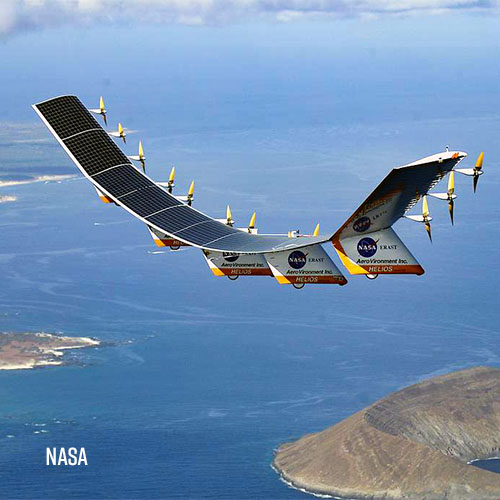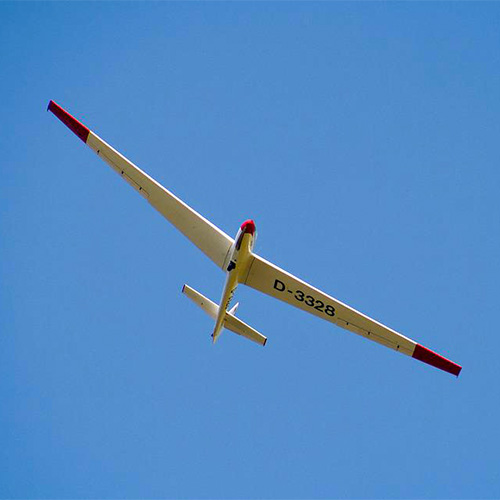Aerospace Development
OPPORTUNITIES
Aerospace Initiatives to Grow Hawaiʻi's Economy

Unmanned Aerial Systems
Hawaiʻi is among only a few locations in the world where next-generation Unmanned Aerial Systems (UAS) could launch and land. UAS operate like geostationary satellites and have the potential to bring a variety of important services to Hawaiʻi. These include:
- Statewide broadband internet access
- Tracking data for storms and volcanic activity
- Monitoring sea level rise, coastal erosion, and reefs
- Tracking the spread of invasive species
- Natural disaster recovery efforts
HAPSMobile, a joint venture of SoftBank Corp. and Aerovironment, Inc., aims to establish a UAS operations and assembly center in Hawaiʻi. The center would support an airborne network of solar-powered aircraft providing wireless services on the ground from the upper stratosphere. Such a facility would aid Hawaiʻi’s economy by creating more than 200 jobs in information technology, engineering, and aviation, as well as vocational programs for prospective workers.
Basalt Fiber Manufacturing
Hawaiʻi’s volcanic basalt has the specific chemical properties needed to make a durable, heat-resistant product known as Continuous Basalt Fiber (CBF). Similar to carbon fiber and fiberglass, CBF is an additive-free material that can be woven into flame-retardant fabrics, corrosion-resistant rebar, and other durable products. As of 2024, global CBF manufacturing was valued at roughly $265 million and projected to triple in the next 10 years.
In 2017, we contracted a state-funded market feasibility study to determine the viability of a CBF manufacturing operation here on Hawaiʻi Island. The report included:
- Current global market demand for CBF
- Average market price of CBF products
- Estimated cost to build and operate a plant on Hawaiʻi Island
- Manufacturing plant business model
- Estimated cost comparison between CBF manufactured in Hawaiʻi and other locations globally
- Potential number of jobs and average wages that would be created
To request a copy of this report, please contact us.


Request White Paper
In collaboration with University of Hawaiʻi at Mānoa’s Hawaiʻi Space Flight Laboratory, we created a white paper outlining a variety of aerospace development opportunities that can diversify and benefit Hawaiʻi’s economy. Interested in reading it? Send us a request using the form below.
